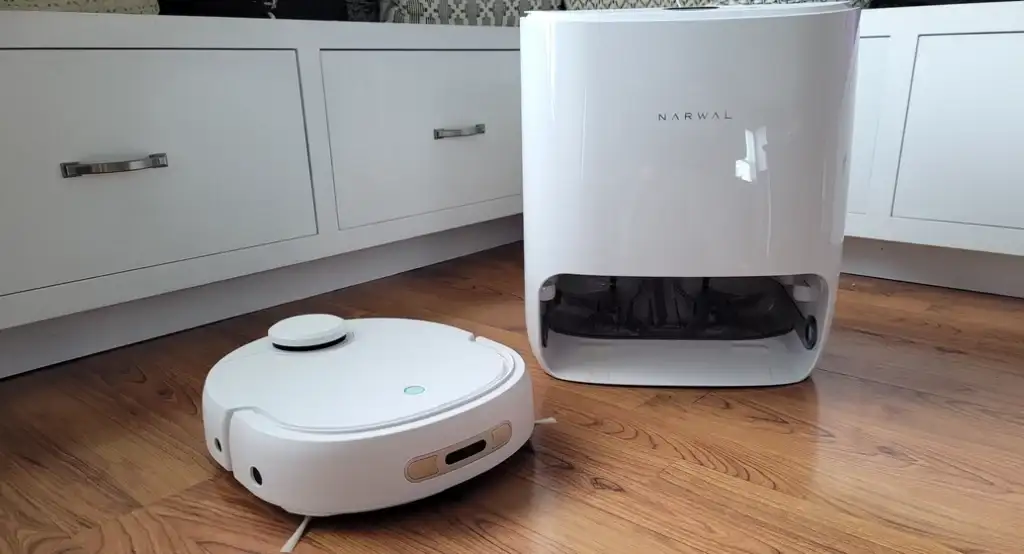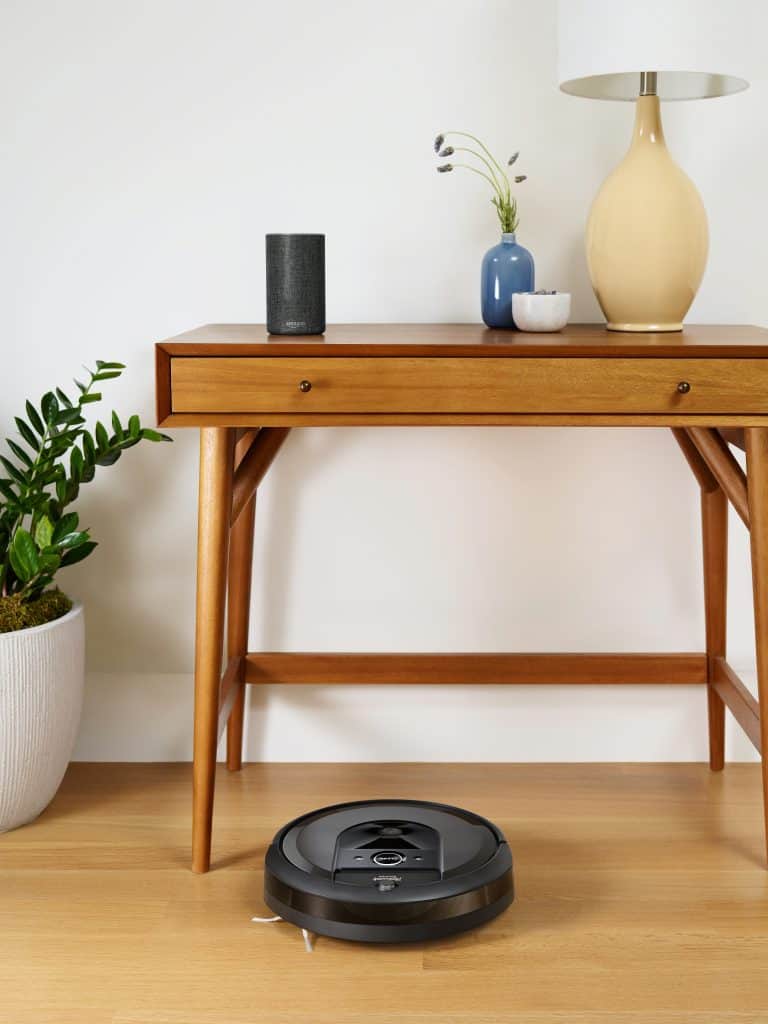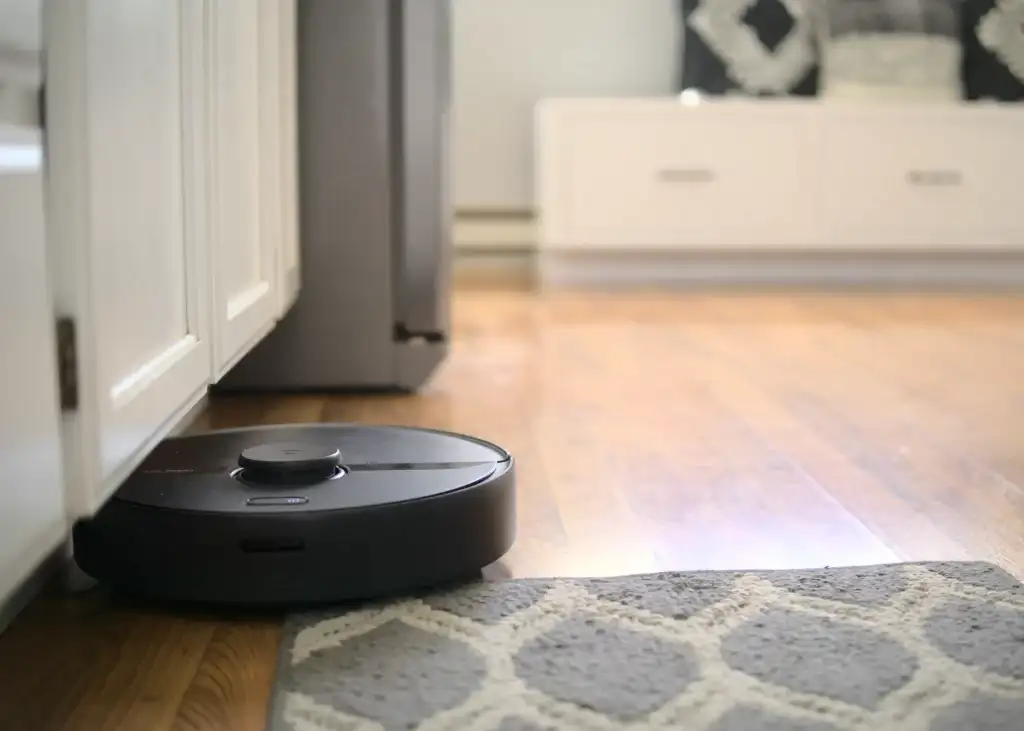A couple months ago Narwal sent me their Narwal T10 robot vacuum and mop. The T10 has been recognized by other reviewers as the best mopping robot out there. I’ve got a lot of hard floors to clean, so I spent the past few weeks putting it to the test.
Quick Review
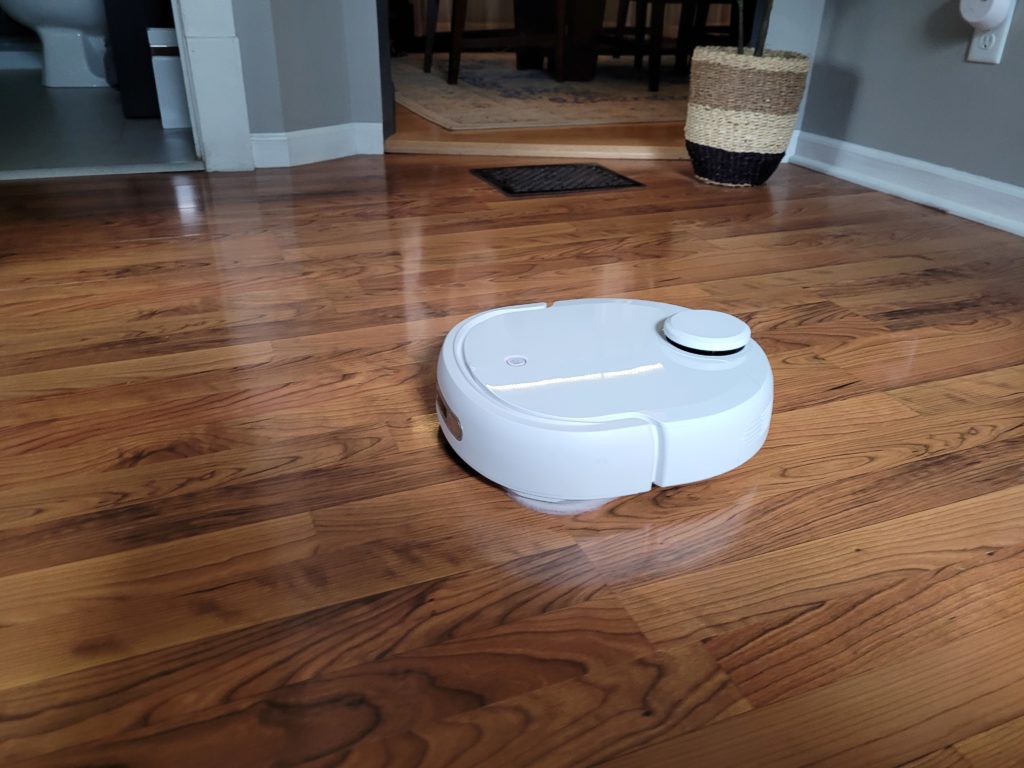
I really like the way Narwal mops. At this time, I don’t think there’s anything else that rivals its effectiveness at mopping large areas without any intervention from you.
There are other robomops that rival it’s scrubbing ability. For example, the Roborock S7 has a mop pad that vibrates. The vibrating action works as an effective scrubber. It may even be better than Narwal at removing some tough stains.
But after a while, the Roborock and other robomops like it end up basically dragging around a dirty rag. Inevitably, this leaves a cloudy trail of dirt once it dries.
The Narwal is different.
It has an automatic mop pad cleaning system. None of the other robots I’ve seen have a system like this.
The cleaning system enables it to clean large floors and do multiple cleanings without getting full of dirt. Since it’s never trying to clean with dirty water, it doesn’t leave tracks of hazy soap/dirt residue in its wake.
The best part is that it does the cleaning automatically. That allows it to clean large floors and do multiple cleanings without any intervention from you. You can simply schedule the cleaning and let the robot take care of the rest.
I can get the fresh smell and shine of a freshly mopped floor every single day, and the only effort that’s required from me is to fill and empty the water tanks every 3 or 4 days.
Check price on Narwal T10: Narwal.com | Amazon
Narwal is a Robomop 1st and a Robovac 2nd
Other robot vacs with a mopping function look like robot vacuums that have a mopping attachment forced into it by desperate engineers. Essentially, they are robot vacuums that also do a little mopping.
However, the T10’s mopping feature is more than “just an attachment”. In fact, the T10 looks like it was designed from the ground up with mopping in mind. I think it’s fair to say that the T10 is a robot mop that also does a little vacuuming.
It has these dual rotating scrubbers that act as the main mopping scrub brushes. These brushes look like they can really give a floor a good scrubbing, especially when compared to the wet cloths that other robovacs drag across the floor.
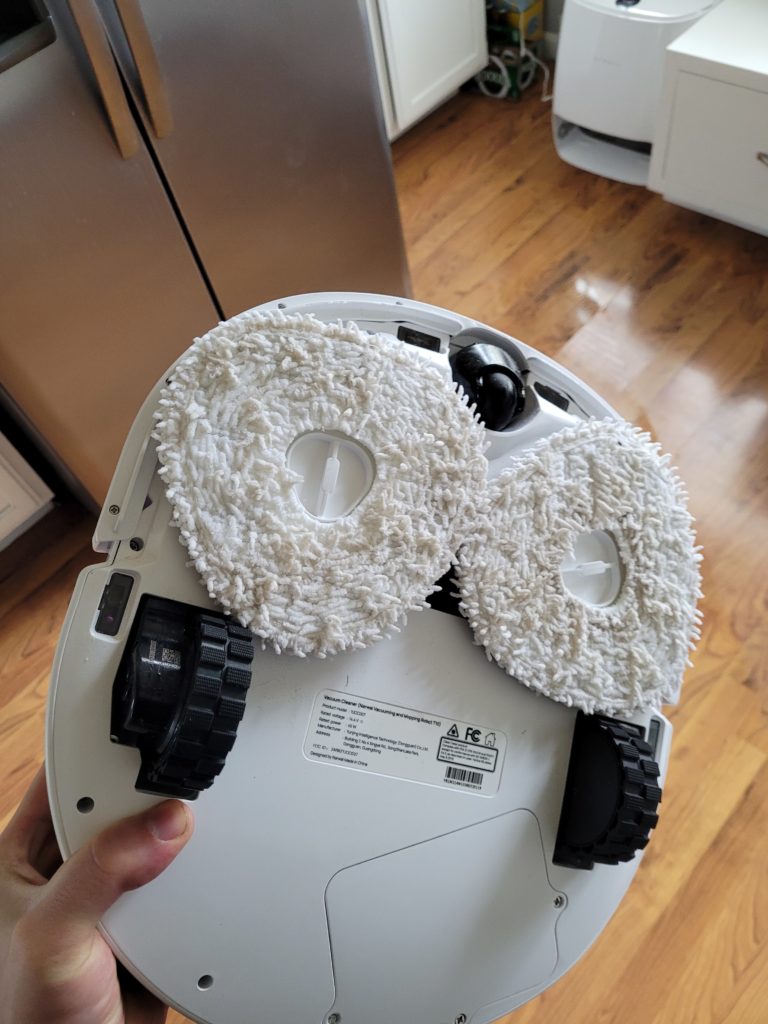
It also comes with this big docking tower. At first glance, I assumed the T10’s docking tower was just another automatic dustbin emptier. But, the docking tower is actually a mop brush cleaning station. When the T10 senses that its mops are dirty, it will go back to the tower for a cleaning. Water from the clean bin flushes the dirt from the dirty mop pads. Then, the resulting dirty water is collected in the dirty water bin. Once the mops are clean, the T10 resumes cleaning where it left off.
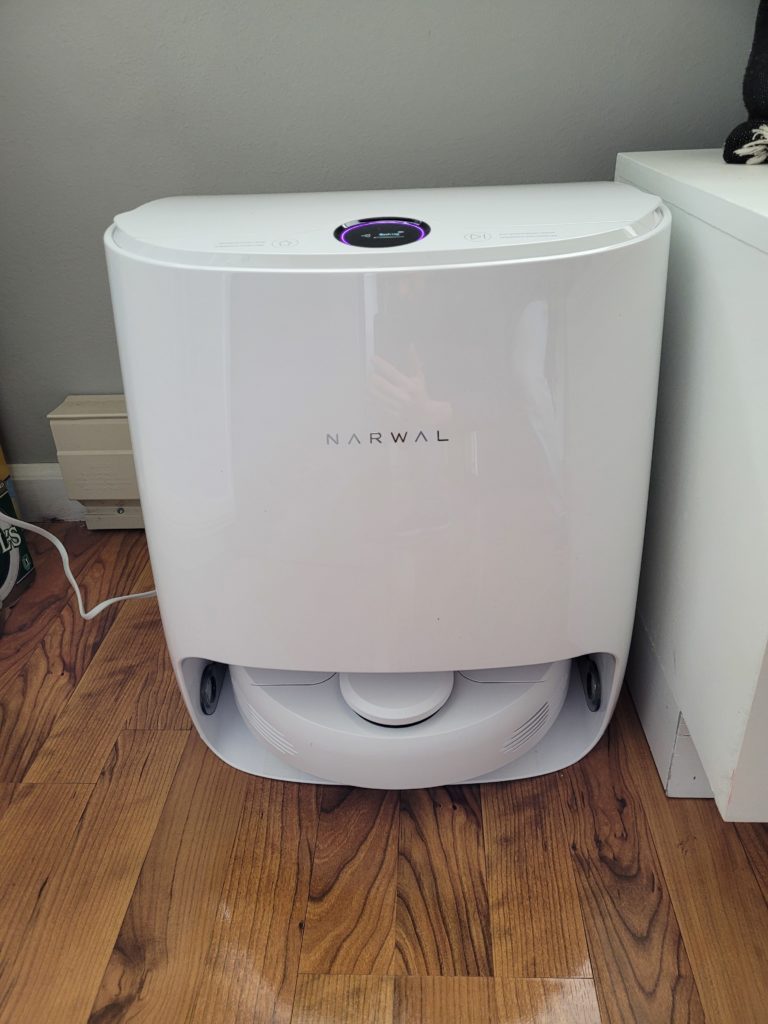
Using the Narwal T10
From setup to regular use, using the Narwal has been relatively painless. Ultimately, what I want from a robot like this is for it to consistently do its job without any intervention from me. For the most part, it succeeds.
Mapping and Navigation
Before you do any cleaning, the robot first needs to map out your area. Once you turn it on, it will prompt you to run the mapping sequence.
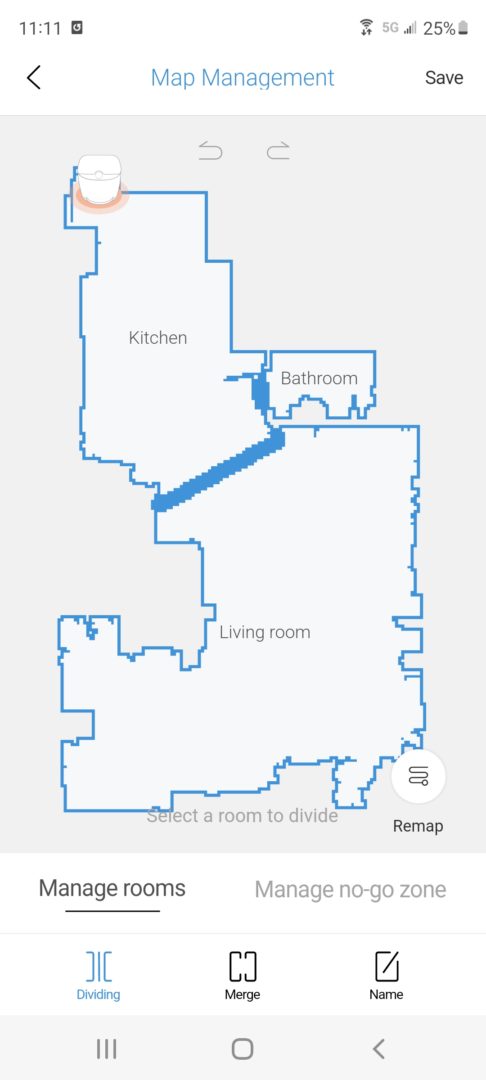
The initial mapping sequence goes quickly. My main floor is about 600 sqft with 4 rooms and the mapping took about 5 minutes. Basically the robot just strolls through the rooms and does a rough scan of the area so that it can calculate the best way to clean the area.
You only need to run the initial mapping sequence once. After that, that map is saved so that when it’s time for the next cleaning it can get right to it.
One map
The Narwal can only handle one map at a time. That means if you want to move it to another floor, you will have to rerun the mapping sequence each time.
In my opinion, this is not practical. Therefore, the Narwal will work best if you park it on your main level where mopping is needed most and don’t move it. Besides, the base unit is bulky enough that you probably won’t want to lug it up and down stairs anyway.
Divide maps into rooms and zones
Once mapped, the app will automatically divide your space into rooms as it sees fit. If it doesn’t do the job well enough, you can merge or divide the space into rooms as you see fit.
In addition, you can add no-go zones. The no-go zones can be specifically assigned to mop mode, vacuum mode, or both. This is especially useful for avoiding rugs and carpet in mopping mode. However, the resolution of the map is somewhat low, so drawing the rooms and zones can be a bit of guesswork.
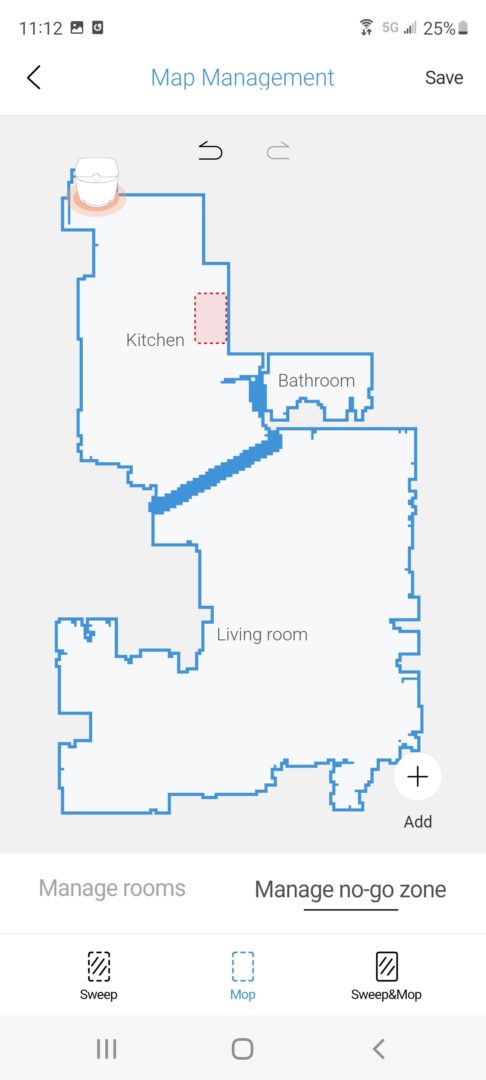
Switch between sweeping and mopping
The Narwal cannot switch between sweeping and mopping by itself. It requires you two manually swap out the attachments.
To me, the perfect robovac/robomop is as “hands-off” as possible. So, the fact that I have to manually intervene to switch between sweeping and mopping is less than ideal. However, the switching process is easy and it only takes seconds.
The sweeping attachment is one piece with two rotating sweepers. The mopping attachments are two triangular shaped mopping pads.
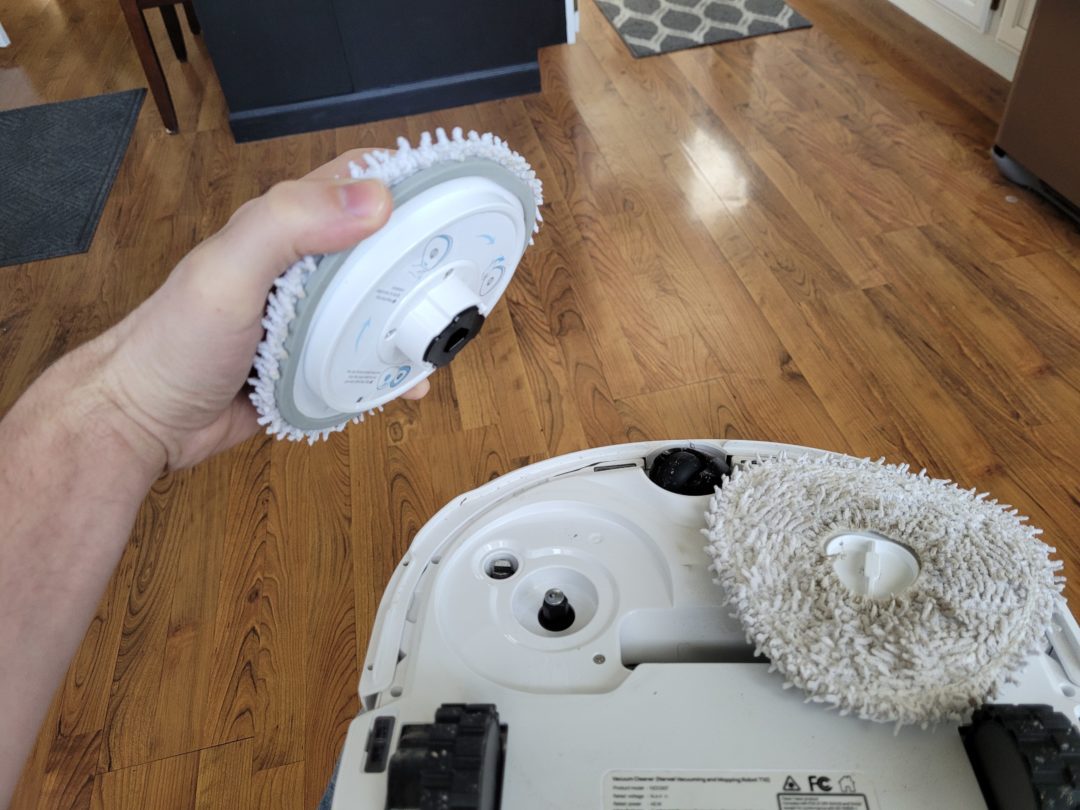
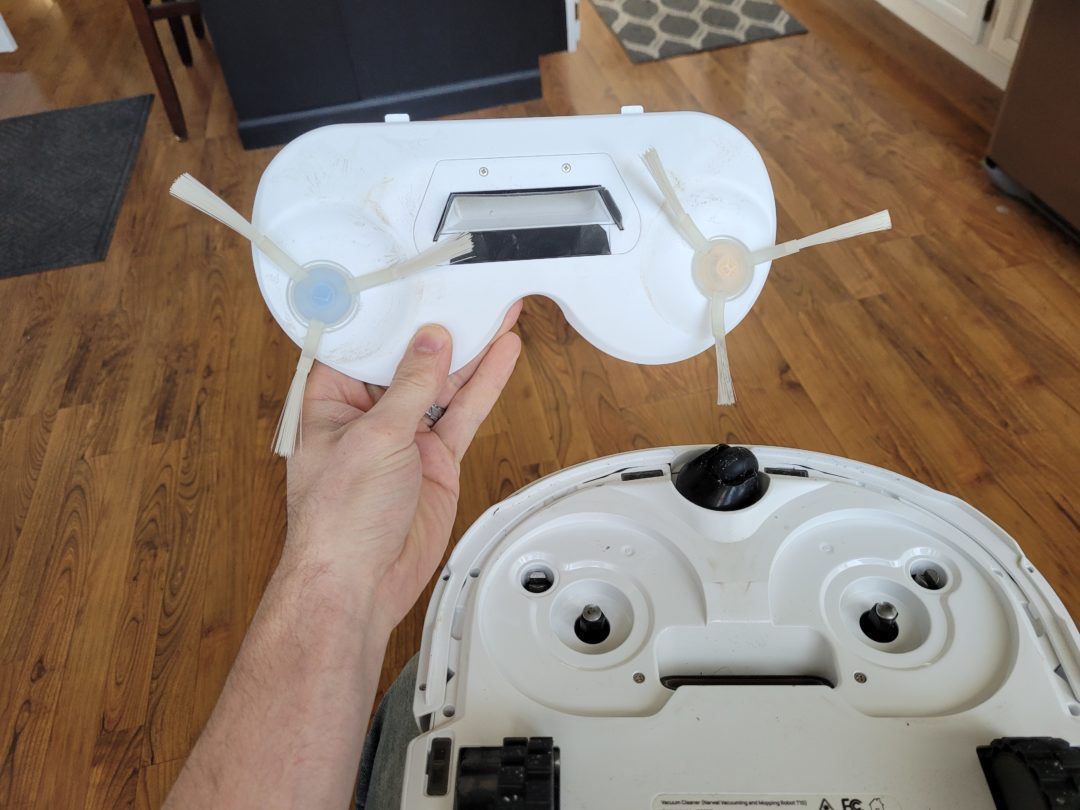
Both attachments are held in place by magnets. So when it’s time to switch, a light pull removes it. Then, position the attachment you want to use, and the magnets suck it right into position.
The Narwal will automatically detect which attachment is installed and will therefore know whether it should be in mopping mode or sweeping mode.
Fill/empty water tanks
At first glance, when I saw Narwal’s base station, I assumed that it was an automatic dust collection system. However, instead of dust collection, it is actually two large water tanks. One tank is for clean water and the other is for used dirty water collection.
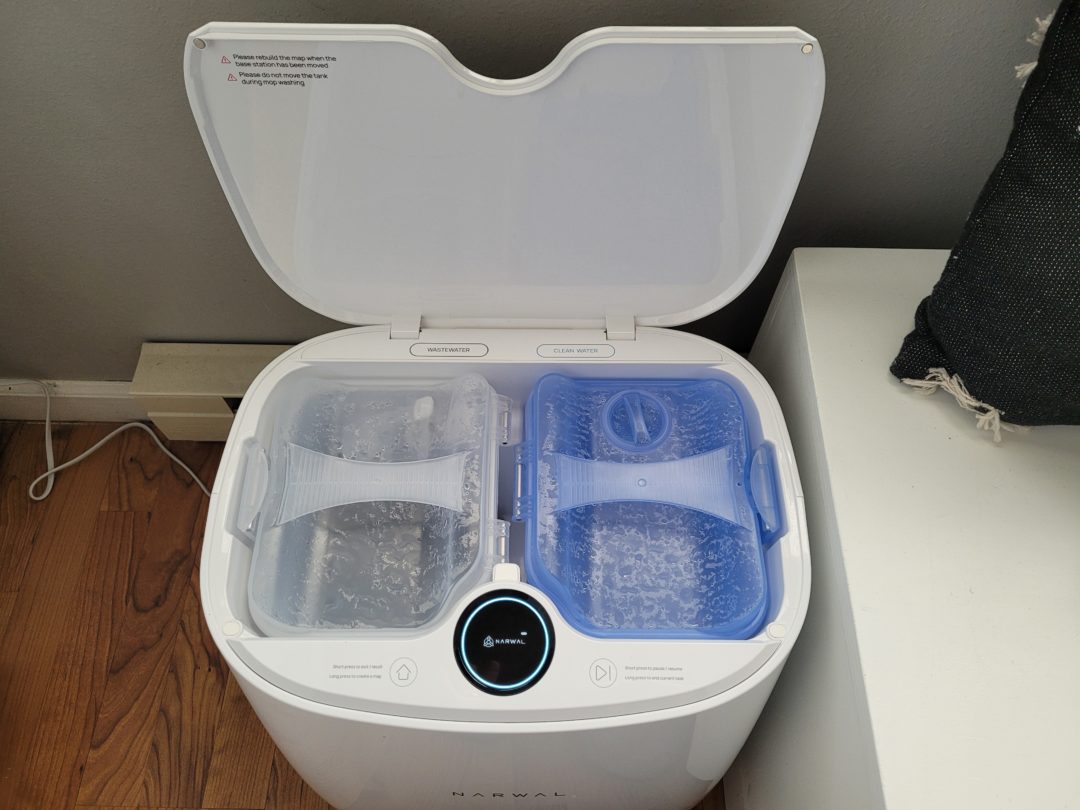
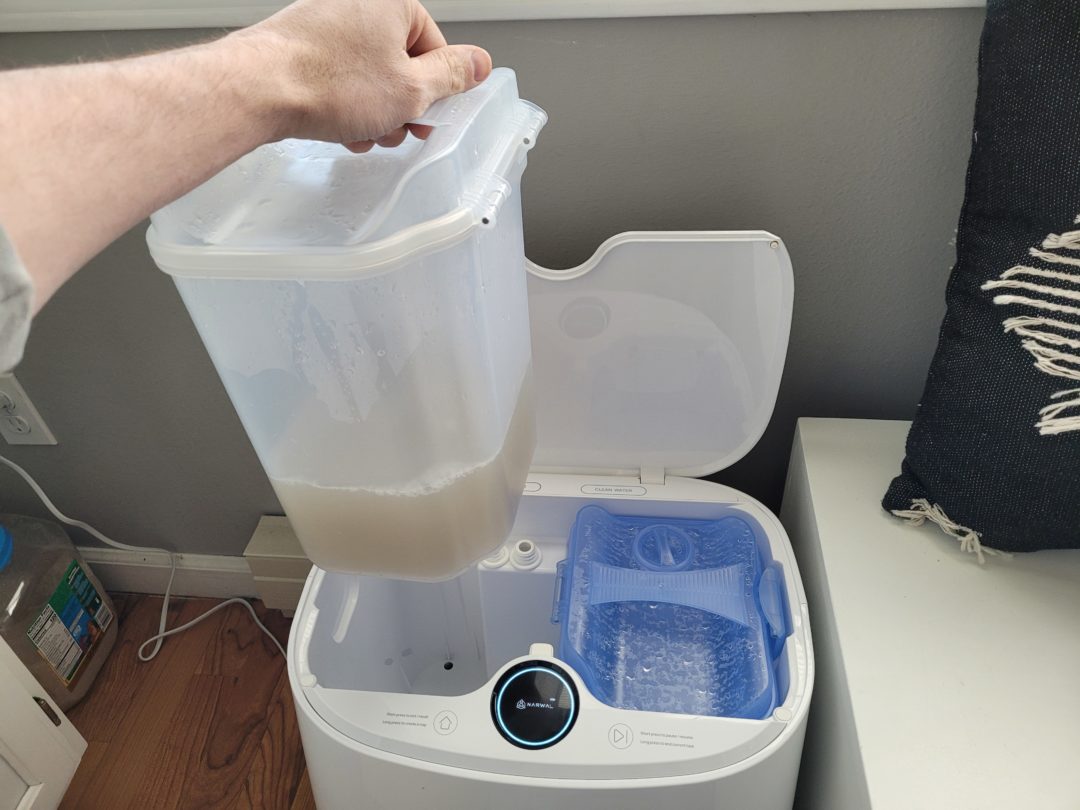
If it gets low on clean water, the app will notify you and the mopping will be paused until you refill it. Similarly, if the dirty tank gets full, it’ll let you know to empty it.
Filling and emptying the tanks is super easy. The lid flips up and exposes the tanks. To remove them, there’s no latch. You just lift them out. Once removed, there is a latch on each tank which keeps the tank sealed. Release the latch and the top of the tank opens up so you can empty/fill. Then, set them back in place once they’re emptied/filled. You’ll hear a light click sound once it’s in the proper position.
To fill the clean water you can use regular tap water. You fill it up to the designated full line and then drop in one of the detergent sheets. The detergent sheet instantly dissolves and provides the soap for the mop as well as a nice fresh scent.
Don’t add your own cleaning solution to the water. It could damage or “gum up” the internal parts of your Narwal. It would be cool if there was a way to add some kind of wood floor polish, but for now the only approved detergents are the Narwal detergent sheets.
Schedule Cleaning
The Narwal app has two ways to tell your robot to clean. You can choose a quick clean which is a one-time request.
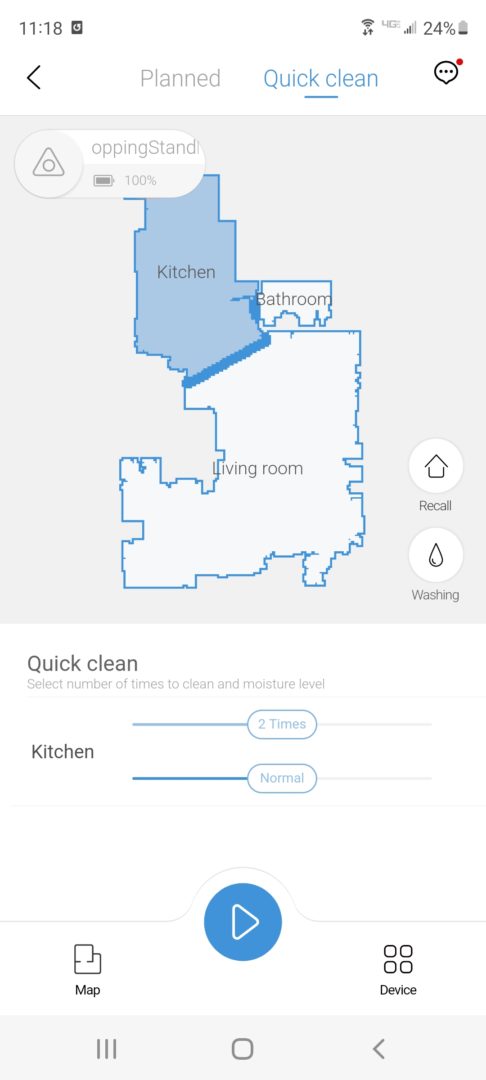
Or, you can schedule cleanings.
To schedule a cleaning, you first create a cleaning plan. Each cleaning plan is either a vacuum plan or a mop plan. Within each plan, you can choose which rooms to clean and how many times to clean it.
Then, you create a time plan. Within the time plan, you select a cleaning plan to follow. Then, you specify what time to start and which days of the week execute the plan.
For example, I have my map divided into 3 rooms: kitchen, bathroom, and living room. My kitchen is the one room that I regularly mop with Narwal. So, I created a mop plan with only the kitchen room selected. I set it to clean 2 times at the “normal” wetness setting. Then, I created a time plan. Within the time plan, I selected the “kitchen only” cleaning plan (which I just created) and told it to repeat on Sunday, Tuesday, and Thursday at 1:00pm.
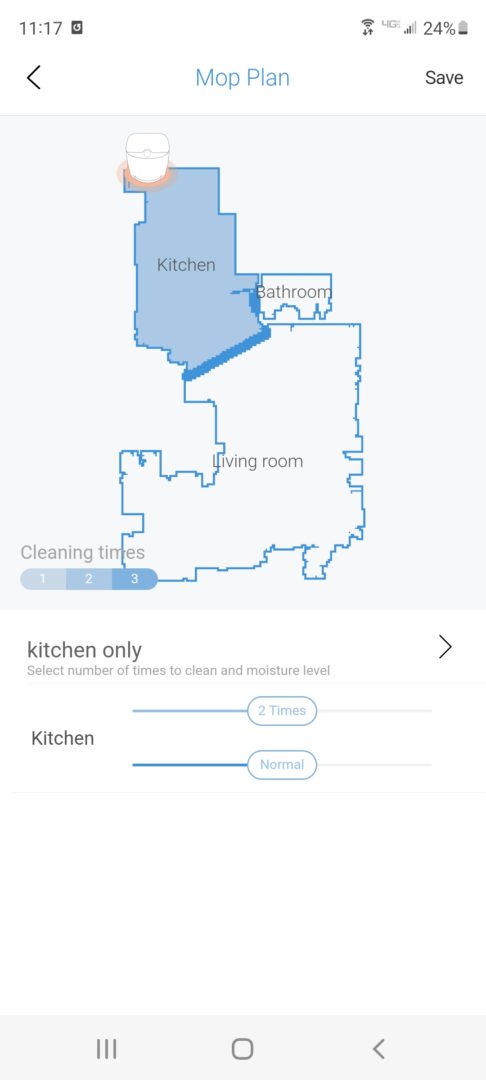

If it’s time for a scheduled cleaning and the wrong attachment is installed, the app will notify you so you can change it.
Smart home integration
I looked at some reviews from 6 months ago and many people complained that the Narwal app was cumbersome and lacking basic features such as scheduling. However, my experience has been much better. Since then, they have added a scheduling feature and must have improved the app’s usability because I have no complaints with it.
As of this writing (March ’22), Narwal does not integrate with any smart home platforms, and there’s no voice control. However, according to their FAQ page, they are working on it. Given the progress they’ve made on the app in the past year, it seems reasonable that this will be added before too long.
Narwal T10 Performance
The Narwal performs really well as a mop. I think it’s the best robomop available. It does a great job as a hard floor sweeper, but performs only marginally if it runs into carpet or rugs.
Mopping
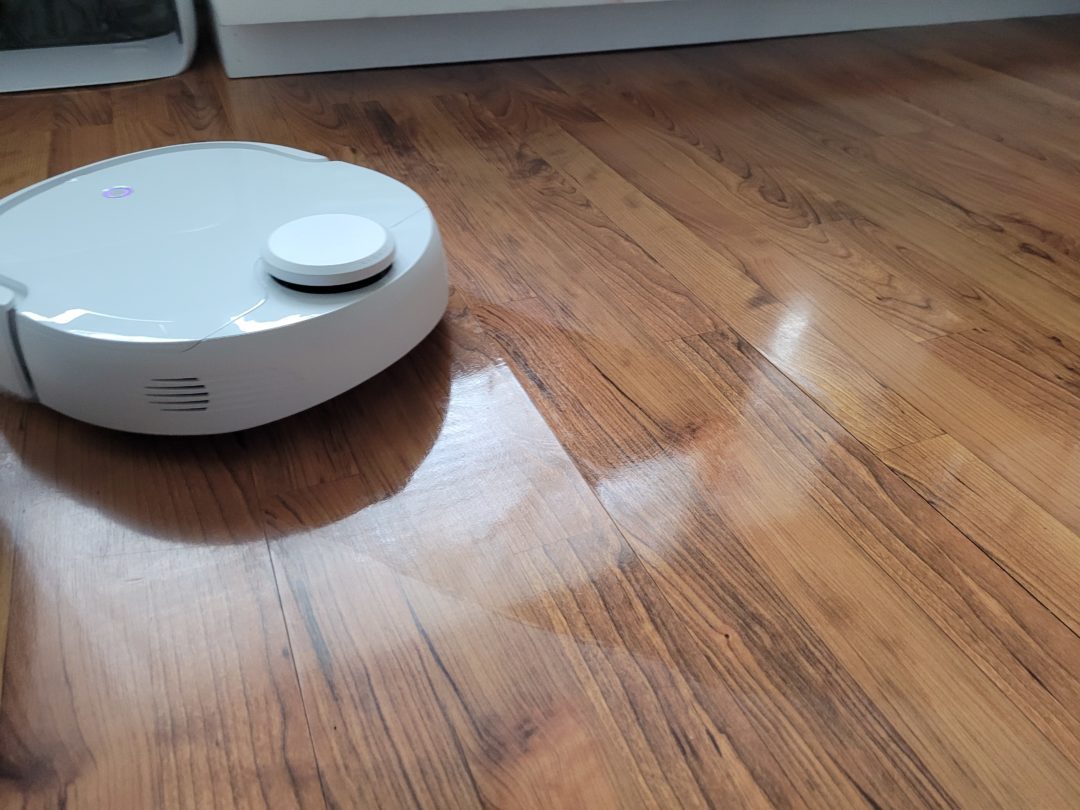
Narwal’s main attraction is its mopping feature.
As I said earlier, most other robovacs with a mopping feature simply drag a wet rag around behind it. This can be okay for wiping off some dust. But, before too long, the rag gets soiled and it ends up leaving a hazy film.
Even if you’re mopping manually, you dunk the mop into a bucket of water. It’s clean at first, but before too long you’re dunking the mop into a bucket of dirty water and trying to clean with it.
The Narwal robot is better than that.
Throughout the mopping task, it will automatically return to its base station to flush out the dirt from its mopping pads and refresh them with clean water.
The mopping process
Once you command your Narwal to start a mopping session, the cleaning process looks like this:
- First, it will pre-soak the mopping pads with the clean water from the reservoir.
- Then, it heads out on the floor to start cleaning.
- After a few minutes of mopping, it will return to the base to clean the mopping pads.
- At the base, the pads are flushed with clean water and the dirty water is collected in the dirty water bin.
- Then, it resumes cleaning where it left off, and the process is repeated until the cleaning task is complete.
- When the cleaning task is complete, the robot returns to the base and the mopping pads are dried to avoid the chance that mildew starts to grow on the pads.
The whole process can start and complete without any intervention from you. You only need to make sure the base station is loaded with enough clean water and the dirty water bin has enough room to collect the waste water.
Each time it does a cleaning, I have it go over the floor twice with medium wetness. If the floor is particularly dirty, it can sometimes leave behind some tracks on the first pass. However, the second pass usually does a good job of removing the tracks and leaving a nice clean, shiny finish.
Cleaning power
Most of the filth in our kitchen comes from dirty shoes. I’m usually in too much of a rush to bother taking my shoes off. So, whether it’s from rain or snow or just regular dust, we usually end up with a fair amount of footprints tracking through our kitchen area. The Narwal does great at cleaning them up.
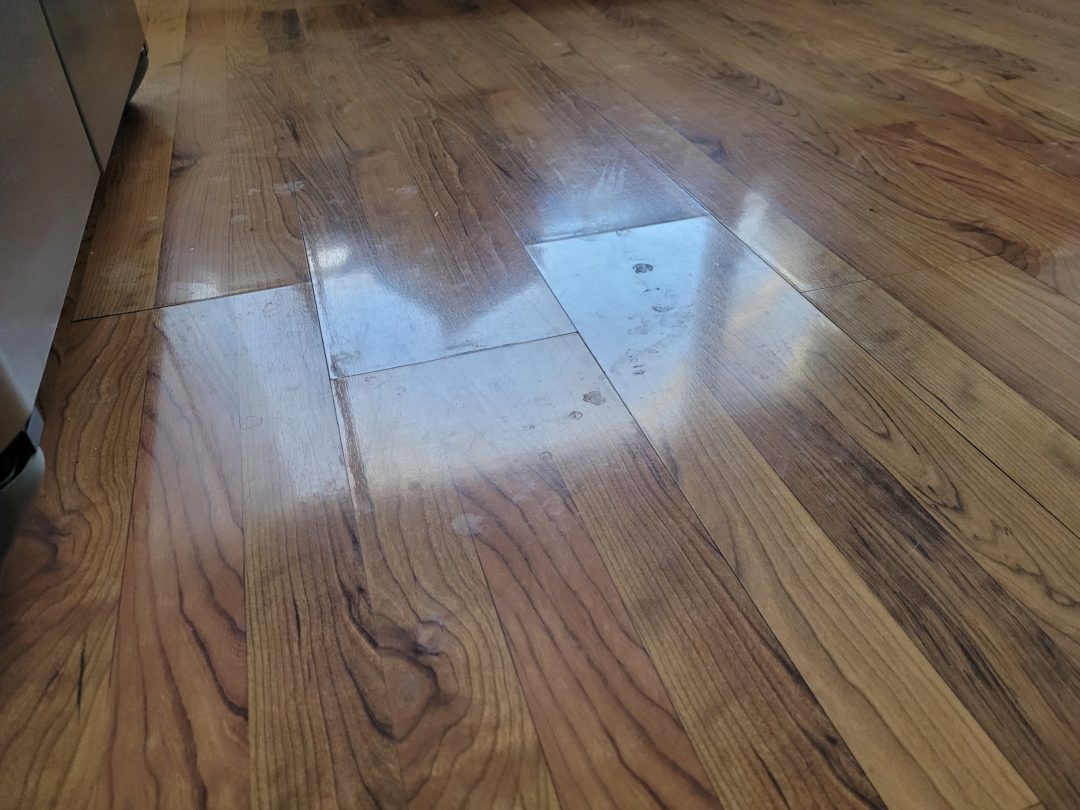
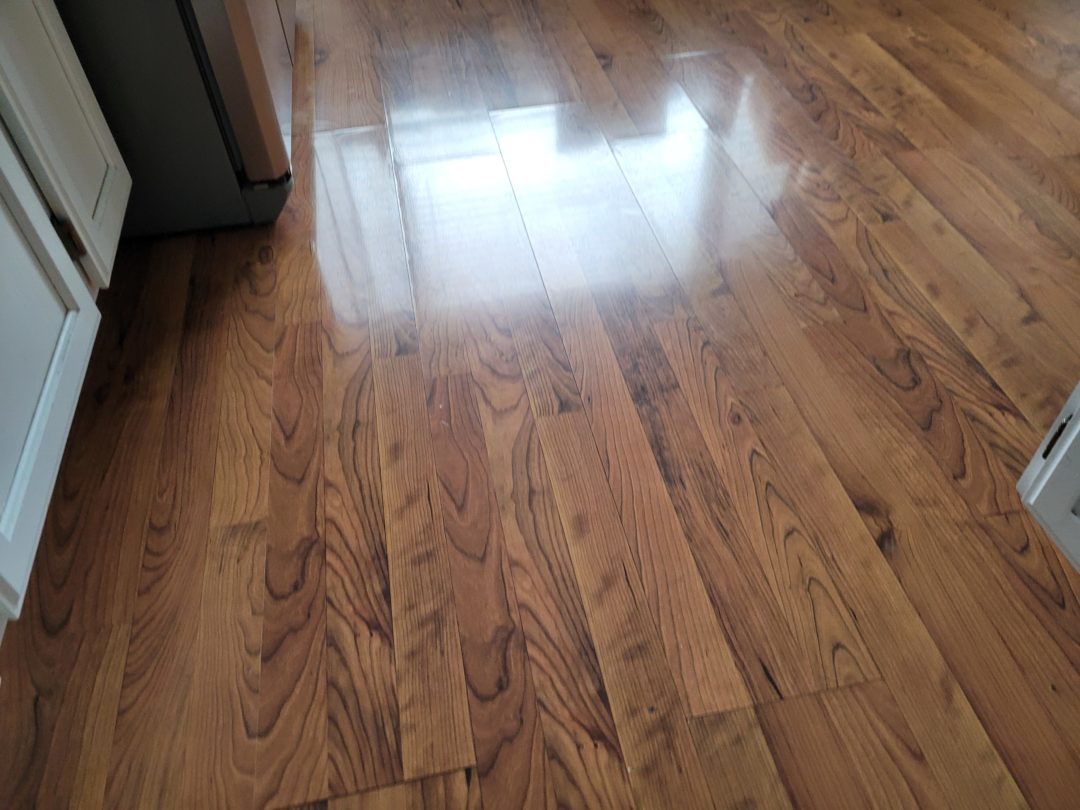
In addition, it does fine removing light stains such as small spills of milk or coffee. However, more stubborn stains will give it trouble. Anything that would require a focused scrubbing if you were to do it manually will most likely not be removed by Narwal.
Dried Ketchup Test
For example, this weeks old drop of ketchup has hardened to the point where I may need to take the belt sander to it. I left it to see if Narwal could eventually remove it. After about 10 passes, there’s still a little bit of stain left, but it has made a surprising amount of progress.
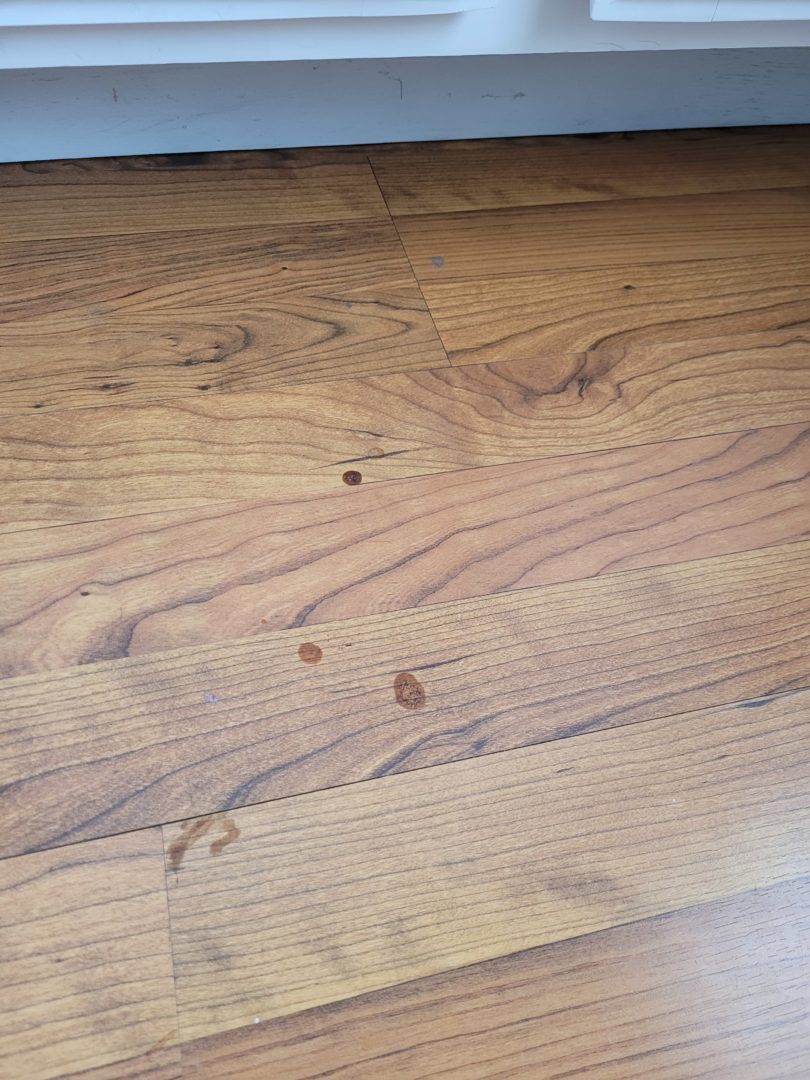
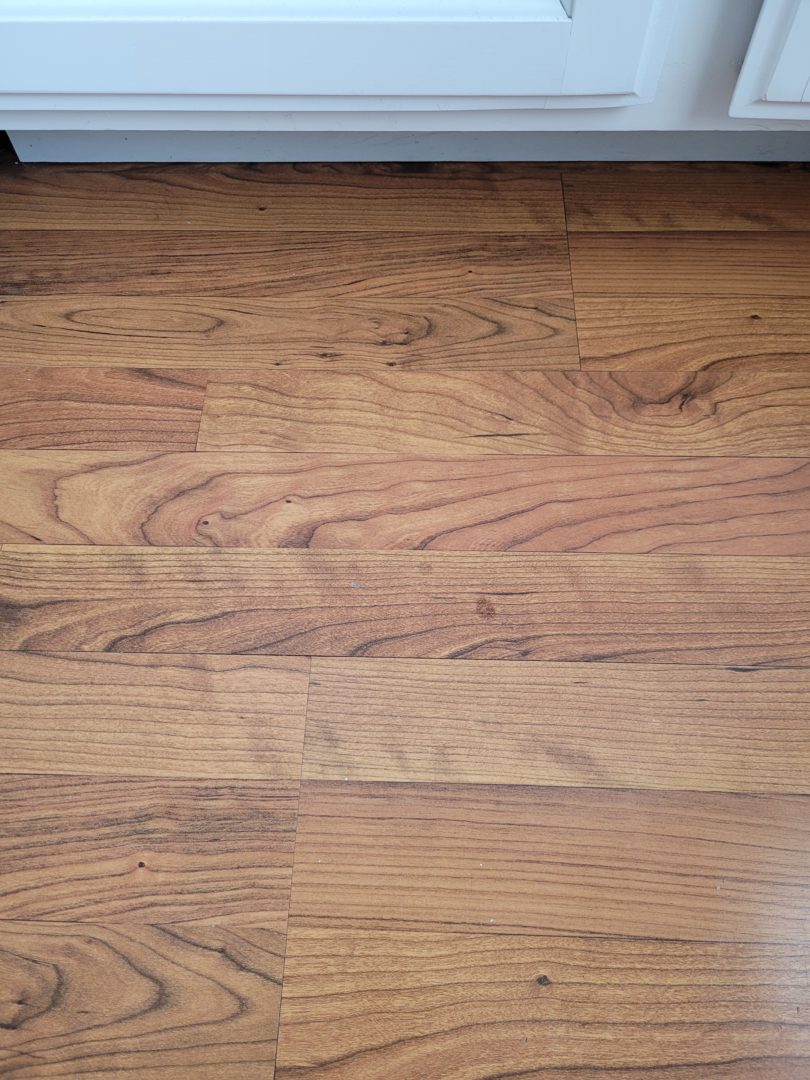
Much like other robovacs, part of Narwal’s effectiveness comes from persistence.
If you’re like me, you probably don’t mop your floor on a daily basis. Before Narwal, our floor was lucky to be mopped once per month.
But once you have a robomop, you can give your floors a good cleaning every single day with hardly any effort. When your floors are being consistently cleaned, difficult stains don’t have the opportunity to dry and harden to the point where they are too hard to clean.
Noise level
The Narwal robot is exceptionally quiet in mopping mode. In fact, the first time I used it, it was so quiet that I didn’t think it was working.
The base station makes a little more noise when it’s cleaning the mopping pads. I think it’s comparable to a typical dishwasher.
Vacuuming (sweeping)
Compared to almost all robot vacuums for sale today, Narwal’s performance as a vacuum is quite weak. While it does have a “vacuum” feature, it’s not designed like a vacuum cleaner in the traditional sense.
Struggles on carpet
At 1800 pa, its suction power is on the low end which makes it hard to pull out any debris that’s lodged in carpets. In addition, it lacks a traditional beater bar which adds to its struggle to dislodge dirt in carpet.
Instead of a beater bar, it has two rotating sweepers that guide the dirt towards the center “mouth” that then sucks it up. For that reason, I think it’s more accurate to call the vacuum feature a sweeping feature.
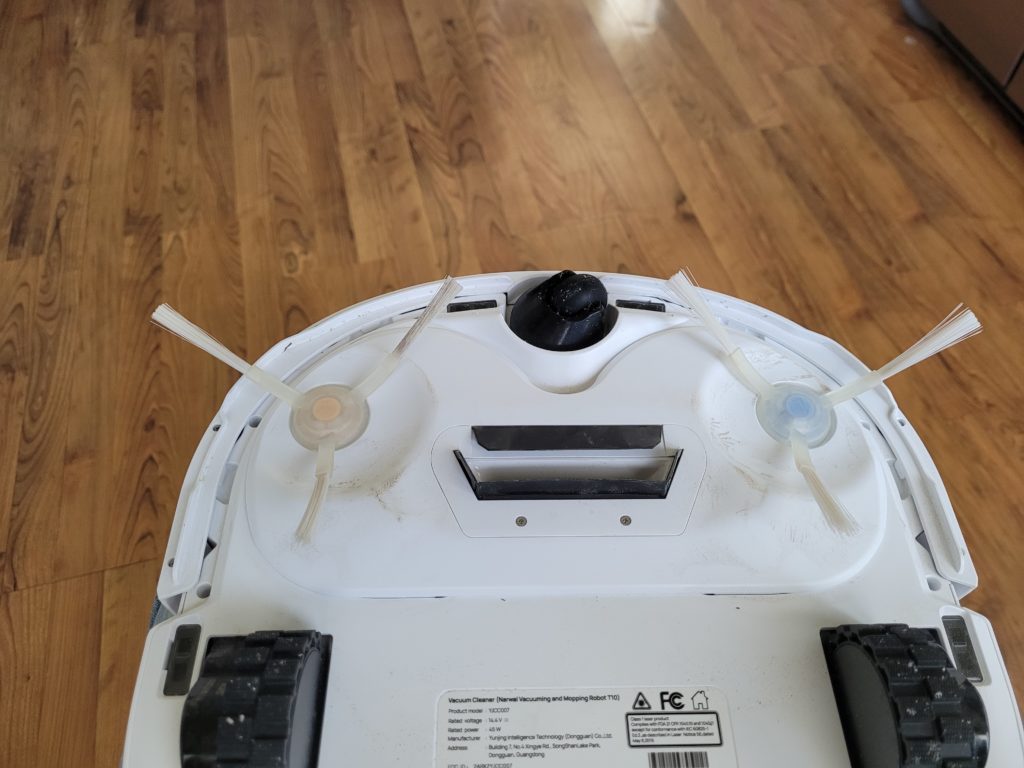
To be fair, it does a good enough job with debris that is surface level. It performs okay on low pile carpet since most debris will be surface level.
Much better on hard floors
The two rotating sweepers actually do a great job of sweeping on a hard floor. In fact, I think that the Narwal does a better job sweeping my hard floors than my Roborock S6 vacuum. It gets right up next to the walls and cabinets, and does a good job directing debris into the “mouth” instead of flinging it around.
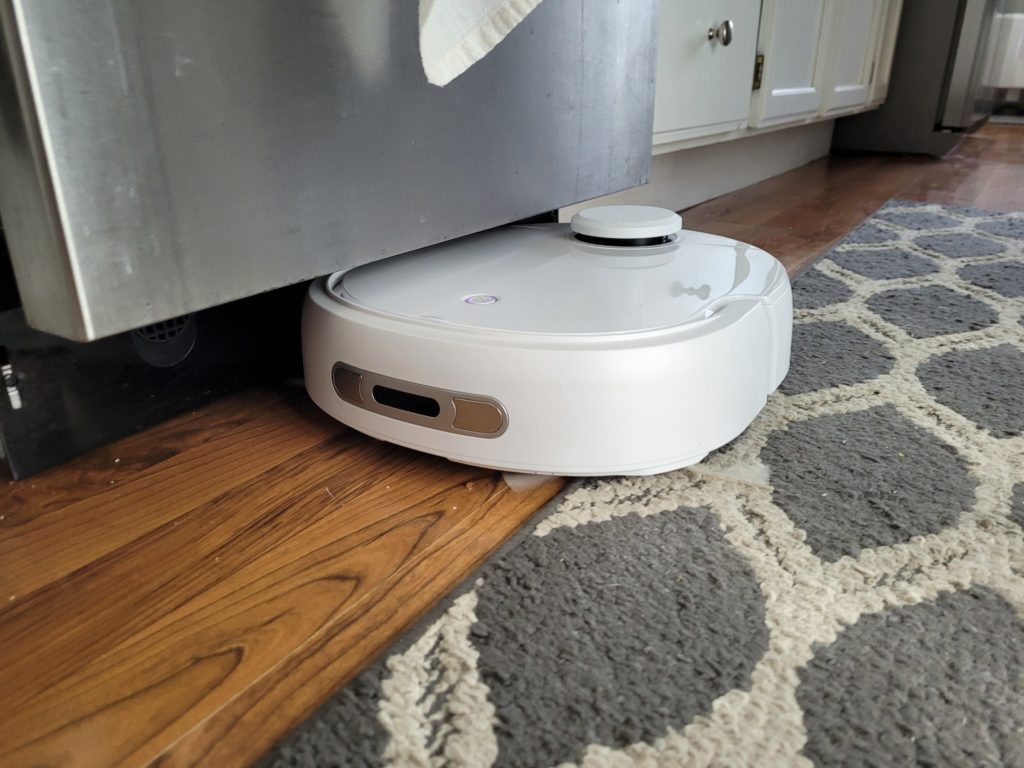
However, the limitation with Narwal’s sweeping is still its weak performance on carpet. Even though most of my kitchen is hard floor, it still has a couple rugs. After a Narwal sweeping, the hard floor is nice and clean, but some debris tends to get left behind on the rugs.
Final Thoughts
My previous robovac was a Roborock S6 (my review) and I was really happy with the way it kept my kitchen floor clean. It did a great job of picking up crumbs and debris and leaving a clean looking floor.
However, even the best robovacs tend to leave a thin film of dust behind. Realistically, it takes soap and water and a little scrubbing action to really make a floor shine.
That’s where the mopping action of Narwal takes my floor’s cleanliness to the next level.
You will be happy with your Narwal purchase as long as you know what to expect.
- DO expect it to do a phenomenal job on your hard floors. It does a good job sweeping and a great job mopping.
- DO NOT expect it to do a good job on carpet and rugs. It’s not made for that. It performs okay on low pile carpet (most high traffic rugs) but don’t expect it to remove anything more than surface debris.
- DO expect it to leave your hard floors clean and without that thin film of dust that most robovacs leave behind.
- DO NOT expect it to remove that drop of ketchup on the floor that’s been hardening for the past two weeks.
Shop for Narwal T10: Narwal.com | Amazon
